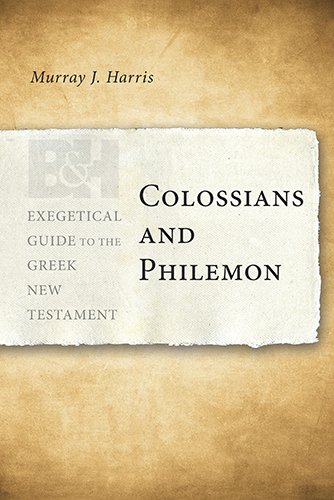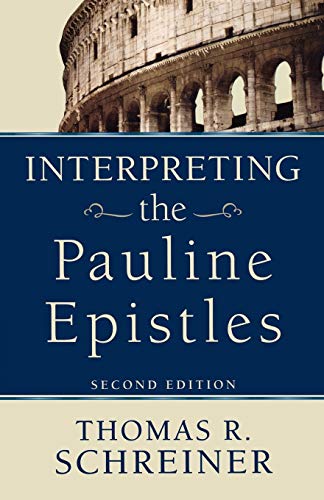Messianic Revelation in the Old Testament
Written by Gerard Van Groningen Reviewed By Willem A. VanGemerenIt is my pleasure to review this work by my former colleague at Reformed Theological Seminary (Jackson, MS). During his tenure at Reformed, Van Groningen was ambitious in developing an up-to-date study on the messianic concept in the OT because the older works were either too dated or too brief, and also because of the critical assumptions in modern works (p. 10).
The author’s presuppositions are clearly stated. He holds to the Reformed view of the covenant (pp. 57ff.) and to the inspiration and infallibility of the Bible (pp. 69f.). He also believes that the present order in the English Bible is ‘the historical order of the scriptural presentation’ (p. 11) and that the method of exegesis of relevant texts determines the investigation, rather than prior conclusions. He rejects the critical views of the transmission of the text and the development of messianism in Israel as a historical development. The author restricts the messianic concept to what is revealed. This qualification is of the utmost importance because the author defines revelation in the modern evangelical sense of inspiration (inerrancy and infallibility) and in the conservative sense of the historical order of the progress of redemption and revelation.
Beginning with Jesus’ words in Luke 24:27, 44, the author looks for a relation between the gospel of Jesus Christ and the revelation of God in the OT. He locates that connection in the ‘messianic concept’ which he extensively introduces in Part I (pp. 17–94). The author treats the various officers and the functions of those anointed in ancient Israel, after an extensive discussion of the root mšḥ (‘anoint’), the noun māšîaḥ (‘anointed one’), the anointing oil, and the application of anointing oil. He further contrasts the development of the messianic expectations in Israel with the expectations of the nations around Israel.
He locates the source of the messianic concept in the nature of divine revelation and its development in the progressive and unified nature of God’s word. He affirms the importance of the word ‘revelation’ in the title as a method by which he considers the messianic concept in the various parts of the OT revelation in the sequence of the English Bible: Genesis (Part 2), Exodus–Deuteronomy (Part 3), The Former Prophets (Part 4), the Poetic Books (Part 5), and the Latter Prophets (Part 6). It may seem somewhat strange that he allocates about 100 pages to Genesis and only 70 pages to the Former Prophets (Joshua–2 Kings). The comparison between the Poetic Books and the Latter Prophets is even more interesting (c. 100 pages and more than 500 pages respectively!). The history of Israel and Judah from the division of the kingdom to and including the post-exilic era is summarily dealt with: the books of Chronicles (1 and 2), Ezra, Nehemiah and Esther cover some 10 pages in all! I wonder whether the canonical approach of Brevard S. Childs, even in modified form, could have helped the author to integrate the theological significance of these books into the messianic concept.
The weakness of Van Groningen’s approach is the same weakness he criticized in other works. He observed that older works were too dogmatic or outdated. This book, too, operates from a clearly defined messianic concept (one that I share wholeheartedly with the author), in that Van Groningen has a faith commitment from which he selects and interprets the text. Instead of clearly defining the themes and subjects that form the messianic concept, he intuits many such themes and subjects. The critic may raise the matter of definition and the conservative may ask why he did not include a discussion of covenant, kingship, Zion theology, or the creation-redemption theme of Scripture. The author introduces many such related topics in the subsequent treatment of passages, but the absence of a coherent integrative framework is disturbing to the serious reader.
The work is dated in terms of bibliography—it appears as if the collection of the bibliography stopped at about 1980—and in method. The method does not take into account the gains of genre criticism or rhetorical analysis. This is for me a major weakness of the book. The author’s detailed, and often laborious, analysis of individual words and phrases tires the beginning student of the messianic concept and strains the interest of the advanced student. Were he to have developed principles of literary analysis by which the many passages could have been grouped together, analysed, and then seen as contributing to the messianic concept, the reader would have been greatly in his debt. Moreover, if Van Groningen had developed a rhetorical study of the texts, he again would have been able to define the nuances in the many texts more precisely.
In conclusion, the reader will find many gems and discover unexpected discussions. For example, the subject of typology is treated under the messianic revelation in the time of Jacob (pp. 153–167). I encourage the publisher to develop a subject index because the table of contents is too sketchy and the many subjects that Van Groningen introduces are too varied; at times he opens up unexpected avenues for exploration.
Willem A. VanGemeren
Reformed Theological Seminary, Jackson, USA







